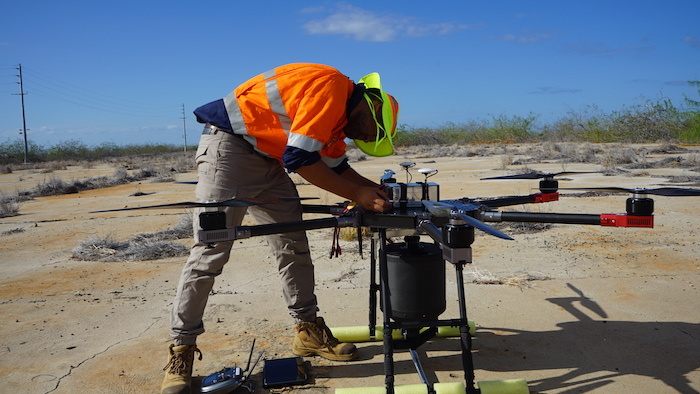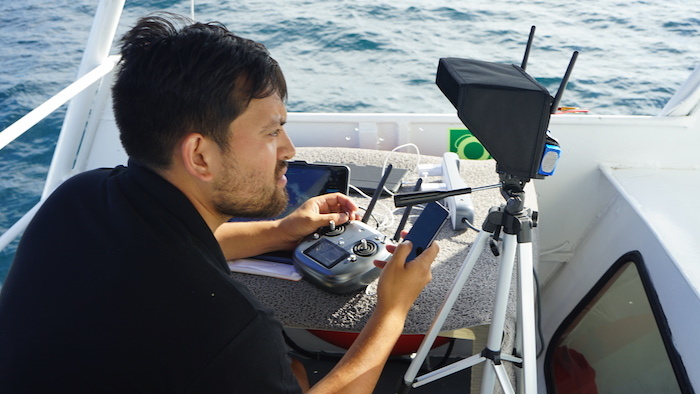Search
Tag Cloud
Subscribe
Pioneering Project Uses Drones to Combat Invasive Species with Support from IGTOA

Seymour Norte and Mosquera Islands are two small specks of land in the Galapagos Archipelago, located just north of the larger, inhabited Santa Cruz Island. Although small, these islands are popular tourist destinations where visitors can get up-close to see iconic species including Galapagos Land Iguanas, Blue-footed Boobies, as well as both Great and Magnificent Frigatebirds. Boats travel to the island daily, giving tourists an opportunity to see eye-catching wildlife. Seymour Norte was once a safe-haven for these native species where birds could nest without the risk of predation, since the island was free of invasive vertebrates.
However, in early 2018, a naturalist guide reported to the Galapagos National Park that they had seen invasive rats present on Seymour Norte Island. Invasive species are a leading cause of extinction on islands and they are linked to 86% of recorded extinctions. After it was confirmed that invasive rodents were present, the Galapagos National Park and Island Conservation considered the incursion an urgent threat to native wildlife. With support from the International Galapagos Tour Operators Association and its member companies, partners quickly began formulating a plan to remove the invasive rats using aerial distribution of bait.
 © Island Conservation
© Island Conservation
Historically, this has required sending helicopters and specially trained pilots to remote islands. For Seymour Norte and Mosquera Islands, which are only 184 hectares and 5 hectares, utilizing helicopters would not be a cost-effective approach. Together, the partners determined that modified drones could take the place of helicopters while increasing maneuverability over the island. The use of drones to restore Seymour and Mosquera Islands is a world first and served as an initial trial that can be replicated on islands around the world.

© Island Conservation
While drones are not the answer to all invasive species removal projects, this new technology will help save island species on projects that previously seemed impossible, such as small islands with rugged terrain. Drone-powered invasive species removal is a promising new technology that is sure to help prevent more extinctions around the world.
Featured Image: ©guenterguni






